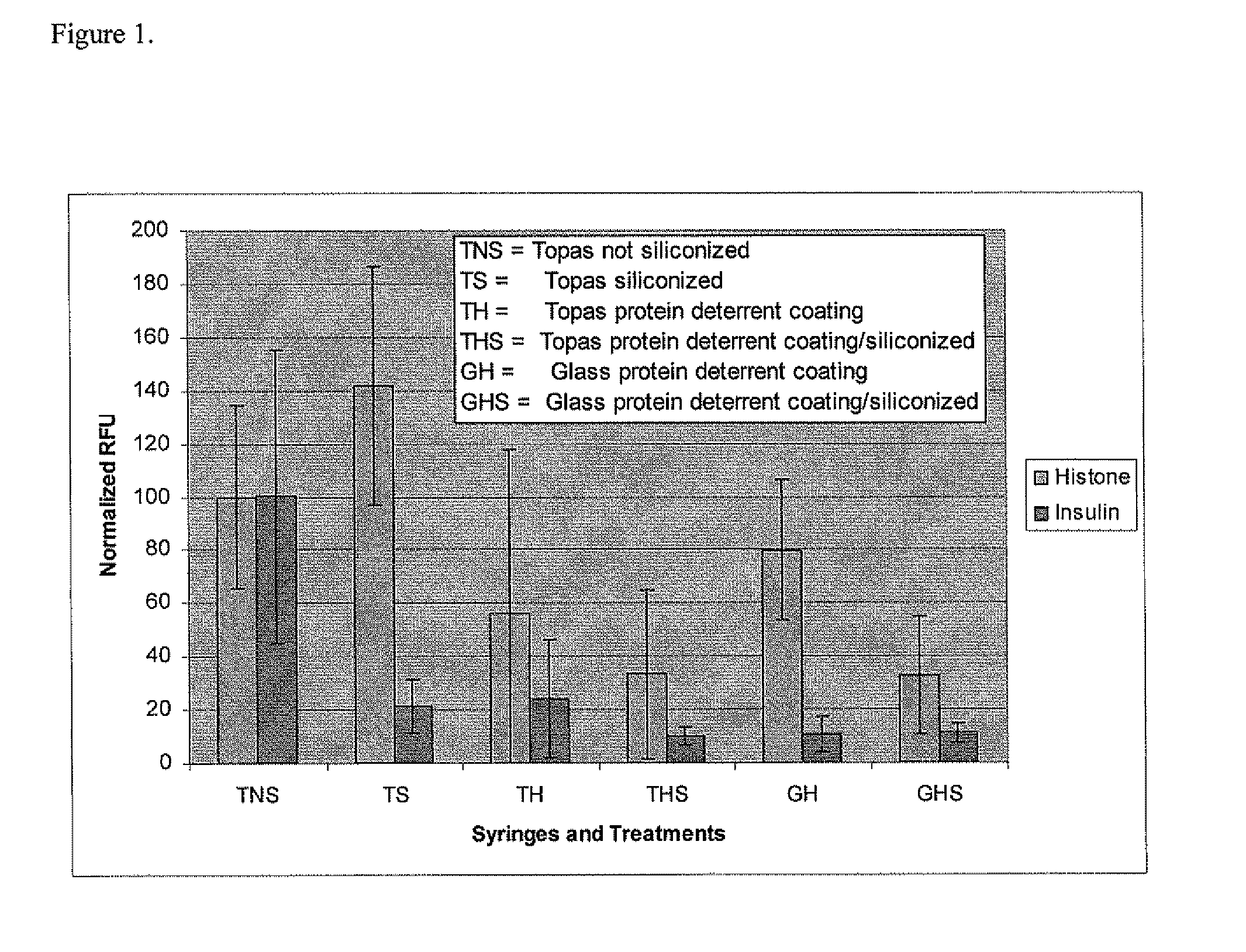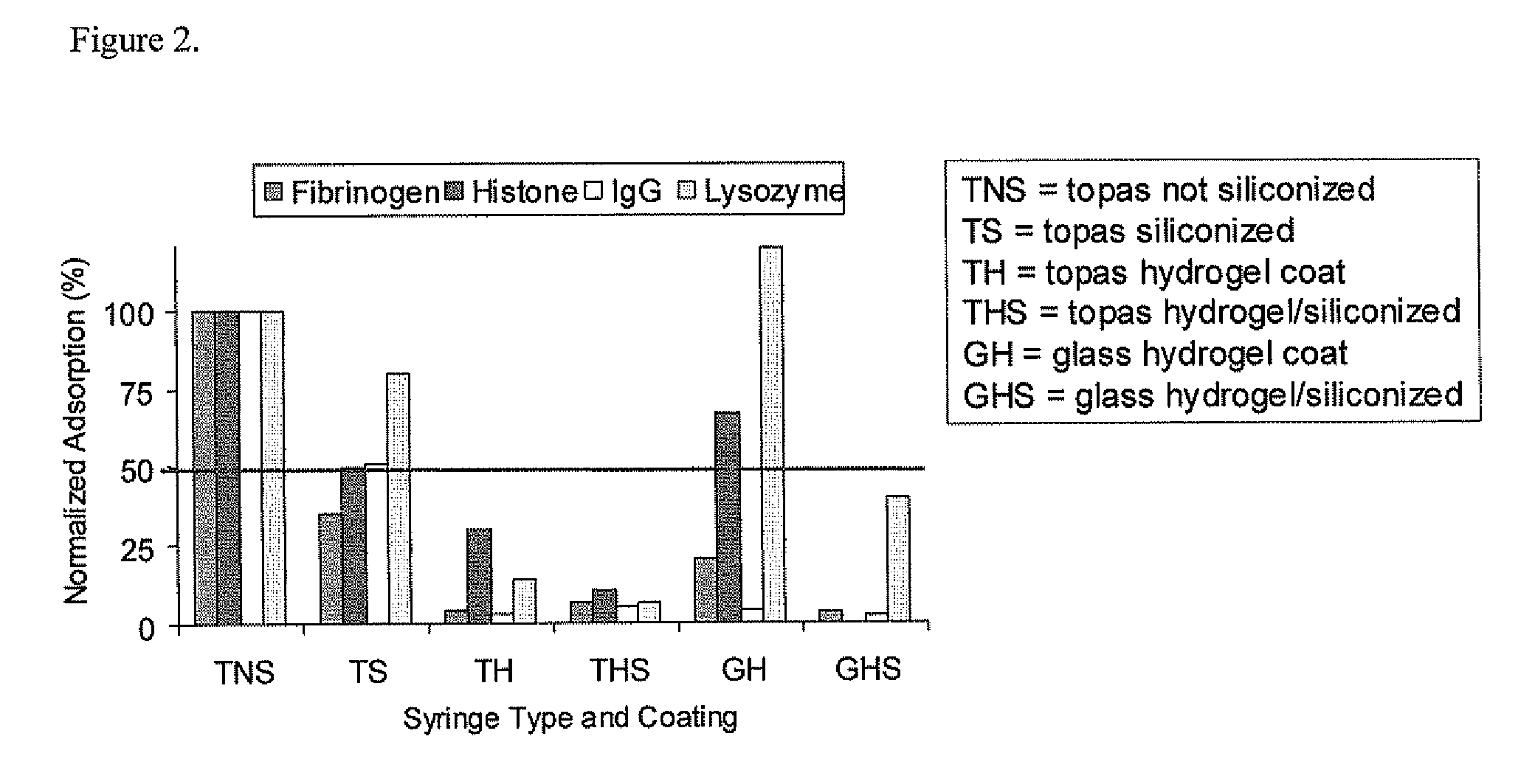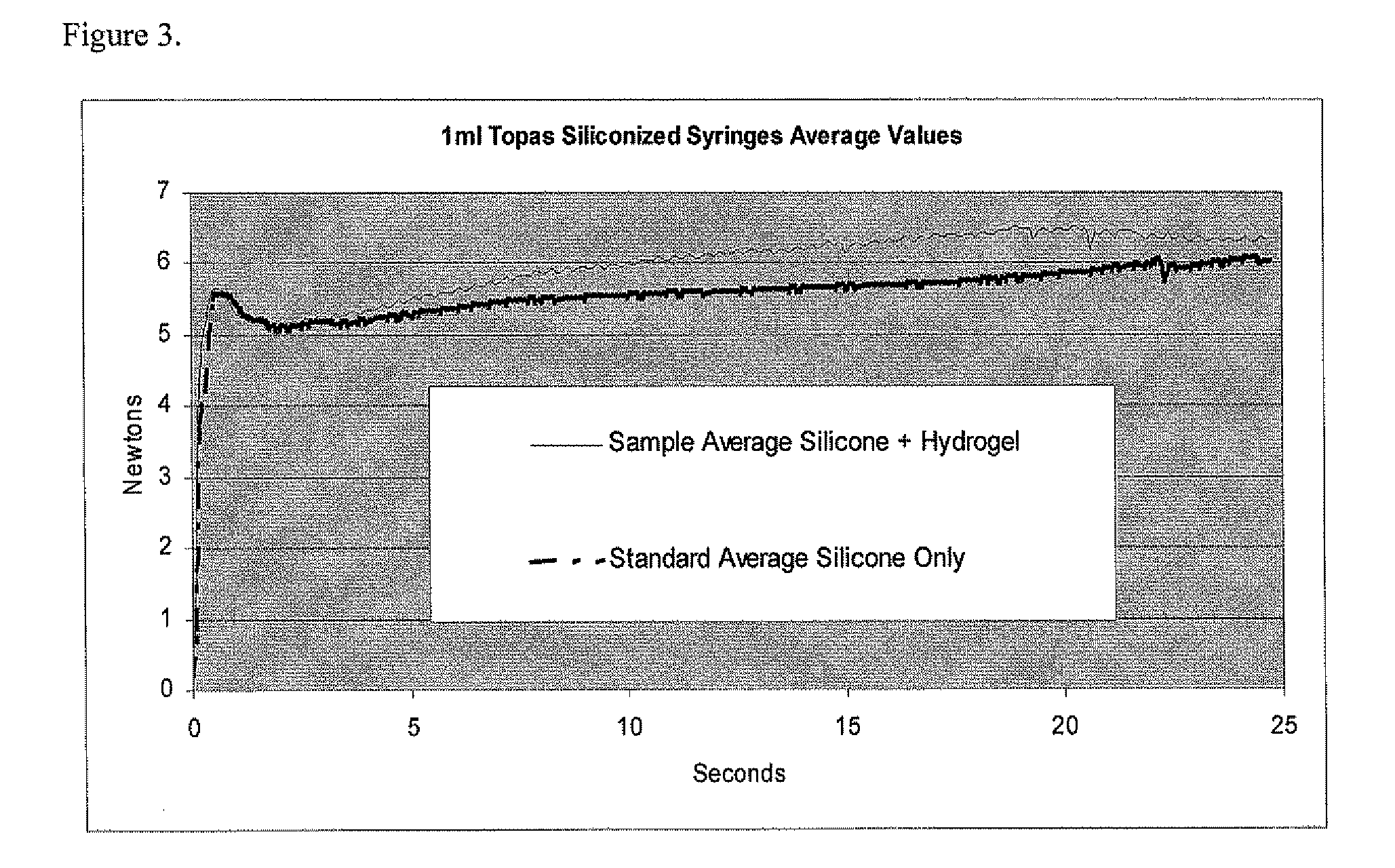Pharmaceutical package having a multi-functional surface and a method of preparing a multi-functional surface on a pharmaceutical package
a multi-functional surface and pharmaceutical package technology, applied in the direction of paper/cardboard containers, ampoules, containers, etc., can solve the problems of increasing the cost of overfilling the packaging container, affecting the product quality, so as to minimize the loss of protein, and minimize the effect of protein loss
- Summary
- Abstract
- Description
- Claims
- Application Information
AI Technical Summary
Benefits of technology
Problems solved by technology
Method used
Image
Examples
examples
[0038]1) Lubricious coating plus coating that minimizes protein loss.
[0039]A matrix of proteins and formulations is tested to establish the adsorption of proteins to various coated surfaces. These tests are conducted in syringes (Type 1 glass and COC polymer materials) by the methods disclosed in U.S. Application 60 / 617,192 titled “Multiplexed protein adsorption assay” where a coated surface can be exposed to multiple proteins under different conditions simultaneously. U.S. application 60 / 617,192 is incorporated by reference.
[0040]Fluorescently labeled (Cy-3 dye from Amersham) insulin and histone are used as two test proteins which are brought into contact with the interior surfaces of syringes in liquid formulations to investigate if protein deterrence could be accomplished, while at the same time maintaining lubricity. The interior surfaces of the syringes are sequentially coated by a coating that minimizes protein loss followed by a silicone oil coating. The protein deterrent hyd...
PUM
| Property | Measurement | Unit |
|---|---|---|
| concentration | aaaaa | aaaaa |
| concentration | aaaaa | aaaaa |
| thickness | aaaaa | aaaaa |
Abstract
Description
Claims
Application Information
 Login to View More
Login to View More - R&D
- Intellectual Property
- Life Sciences
- Materials
- Tech Scout
- Unparalleled Data Quality
- Higher Quality Content
- 60% Fewer Hallucinations
Browse by: Latest US Patents, China's latest patents, Technical Efficacy Thesaurus, Application Domain, Technology Topic, Popular Technical Reports.
© 2025 PatSnap. All rights reserved.Legal|Privacy policy|Modern Slavery Act Transparency Statement|Sitemap|About US| Contact US: help@patsnap.com



